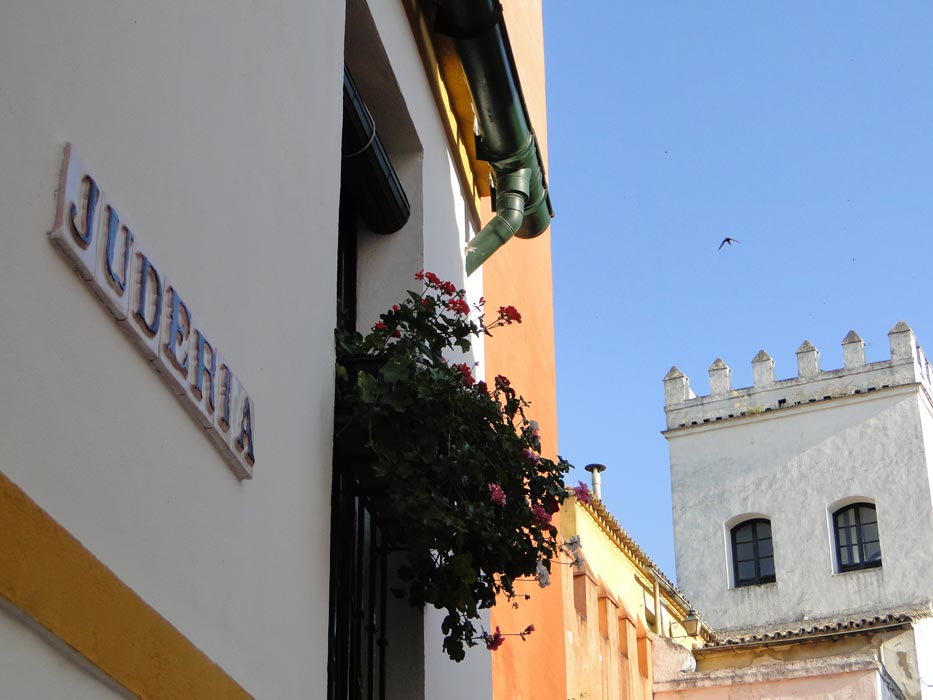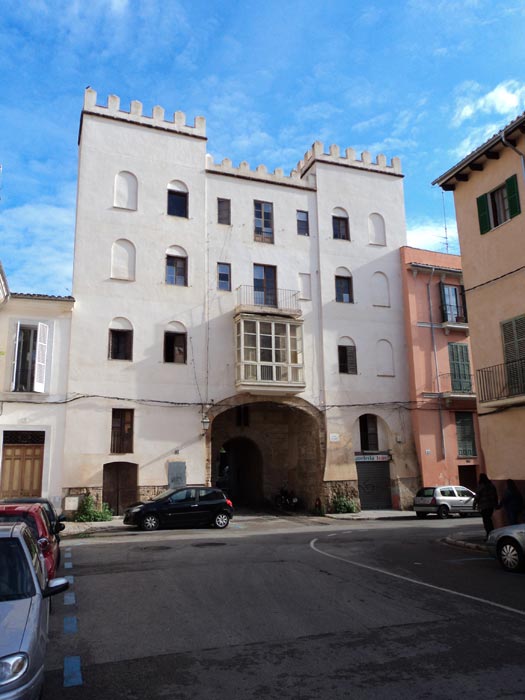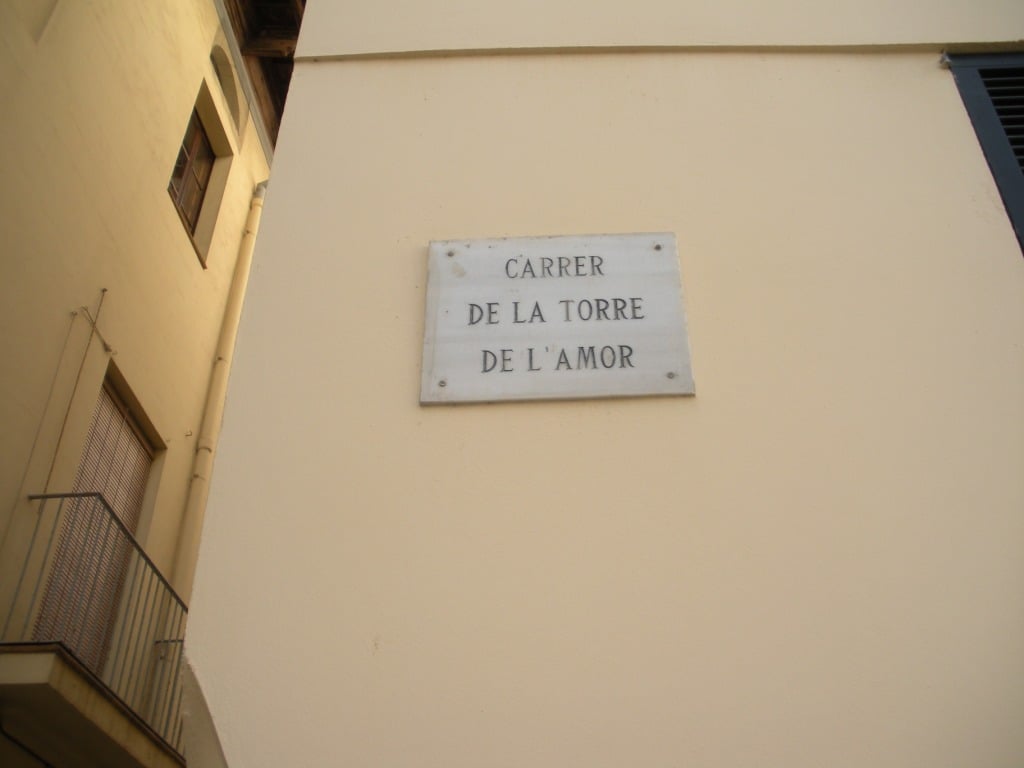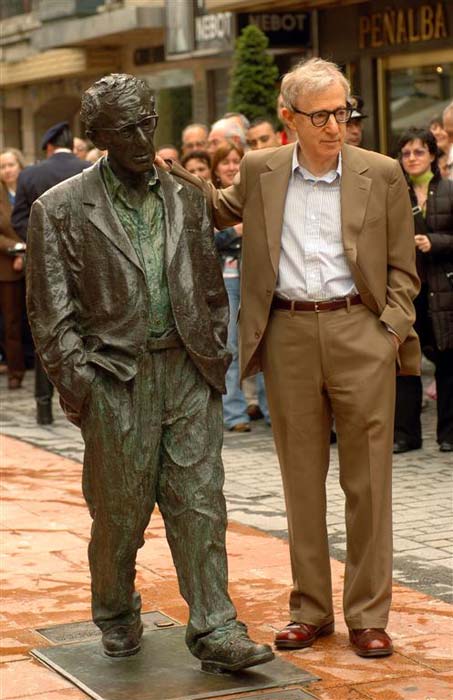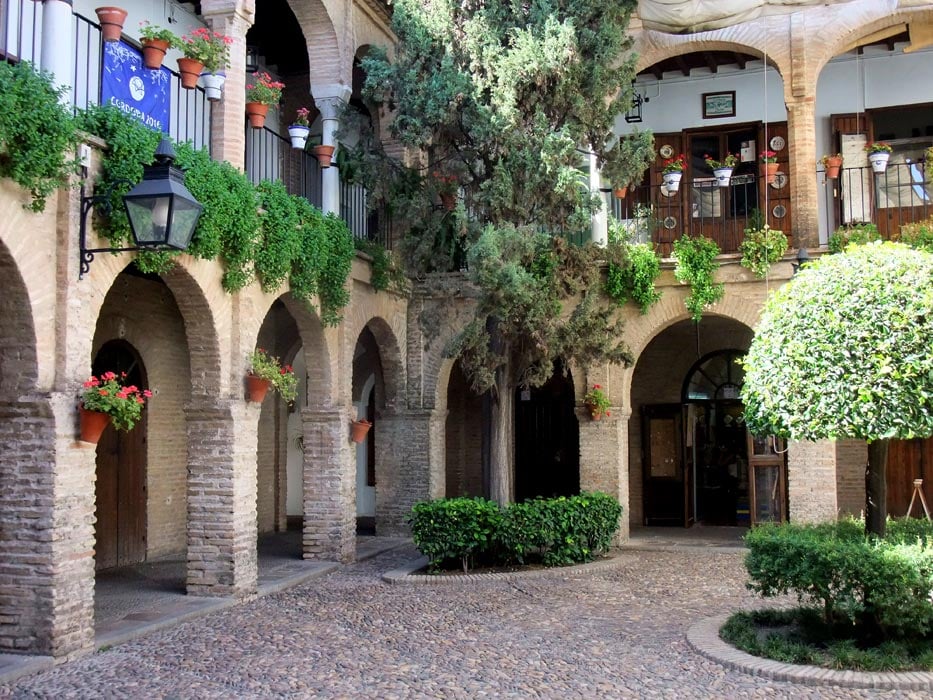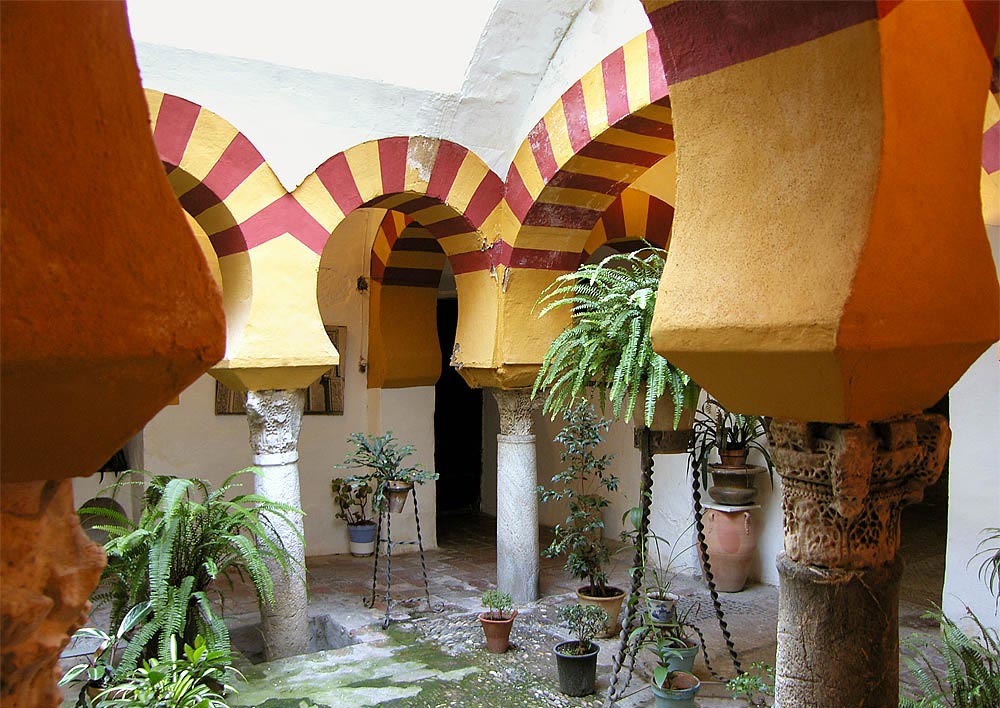Susone Street was previously called calle de la Muerte (death street) because of the skull of the Jewish Susona. Two tiles recall the legend on the wall of number 10 (one on each side of the corner). The first is the skull of Susona and the second recounts the legend with these words: “En estos lugares, antigua calle de la muerte, pusose la cabeza de la hermosa Suona ben Suzón, quien, por amor, a su padre traicionó y por ello atormentada dipúsolo en testamento.” It seems to be the case that the father belonged to a group of Jews which was preparing an uprising in 1481. The conspirators wanted to gain power in the city and endeavour, with the support of the Moslems, to take on the Christians of Seville. The conspiracy involved Diego Susón, banker and the ringleader; Pedro Fernández de Venedara, steward of the cathedral; Juan Fernández de Alboslaya, the attorney and Mayor, Adolfo de Triana and many more. The first of them had a daughter called Susona, who had a secret relationship with a Christian knight, whom she fell in love with. When she found that part of the plans of her father along with the other conspirators, was to kill the man she loved, she didn´t hesitate in informing him. The result was: the consouracy was disbanded and its ringleaders were arrested and sentenced to death. It is said that after her death, she asked in her will for her skull to be placed by way of punishment and example at the house where she lived of her own free will.
Site Tag: Attraction
Juderia Street – Calle Juderia
Juderia street is one of the most charming streets in the Santa Cruz district. It has a very odd layout, starting by the Patio de Banderas at the former Citadel, passing under some houses. It crosses under one of the wall towers with an access at a bend, and it follows on the exterior of the citadel wall with a fountain and a headstone dedicated to Luis Cernuda. At this street we can see an arch and a tower which was part of the gate connecting the Citadel with the Jewish quarter.
Gomera Temple Castle
Built on the fortified gate of the same name, the age-old way out of the city to Levante, over time the Temple Castle has been given many names, including the former Gomera Citadel. It was the headquarters of the Knights of the Templar who owned a good number of the houses in the Main Call and harboured the Jews until the Order disappeared in 1313.
The Tower of Love
Torre del Amor street brings to the present the dispute between two prominent Jews who resorted to the King´s arbitration. According to a document in the chancellery of Pedro the Ceremonious from 1379, this tower was built in 1365 by Moses Faquim owing to his love of another rich Jew who was his rival, Magaluf Natjar. He ostentatiously christened it the Love tower. And he boasted of it to the extent that he would even invite prominent Christians to go up the tower to spy on the house of his rival and the woman who was the object of his passion. Annoyed and humiliated the husband, Magaluf Natjar, lodged a complaint with the monarch. Pedro IV ordered the lowering by twelve palms of the pompous tower built by his rival Moses Faquim to spy at ease on the wife of the former who he was in love with
Rua Palace (Casa de la Rua)
At the confluencia of Rúa street with Alfonso II el Casto square lies the house or palace of Rúa, from the 15th century, also known as the palace of Marqués de Santa Cruz del Marcenado and regarded as the oldest civil building in the city. Its solidity contrasts with Llanes House which stands by its side and which is dated 1740 as the residence of the Knight of the Order of St. James Menendo de Llanes-Campomanes. Opposite both constructions the statute La Regenta (wife of the Regent) displays its melancholy, a work by Mauro Álvarez from 1997, one of the numerous works of art occupying the city where the presence of the sculpture in the street has become one of its most genuine distinguishing features.
Woody Allen Statue
Following the tracks too of one of the most well-known Jews of our time, in Milicias Nacionales Street, opposite San Francisco park and slightly set back from the traffic on Uría street, stands the statue of the film-maker Woody Allen, a work by Antarúa from 2003, walks absent-minded as if pondering the long history of the Jews of Oviedo in the old district from where its steps appear to come… A final contemporary homage to the memory of a collective which formed part of the history of the city for a large part of the Middle Ages.
Convent and University of Saint Dominic
In the Alemanys Garden, very near Gironella Tower, there is an access to the wall-walks with magnificent views over Girona and its barri vell (old district). From here you can gain an idea of the proportions of the old Sant Domènec convent, today the Faculty of Arts of Girona University. The square flanking it was the site in 1409 of a mass anti-Jewish sermon by St. Vincent Ferrer which the Jews were obliged to listen to behind wooden fences. Back in the gardens, and through them, a small clearing leads to the gate of San Cristobel where the route continues outside the wall through a spectacular Archaeological Promenade. Julia tower and Gironella tower define the profile of the large wall alongside which the cathedral is located on a path descending amongst flowers, vines and cypresses.
The Souk
As in the other Moslem cities, Córdoba constituted a large marketplace. Traders and craftsmen opened their shops on the street in a narrow, busy corridor which spread throughput almost the whole city, offering its customers products they made themselves or brought from all around the world. In ancient times the souk contained wool, perfumeries, shops etc. It suffered several fires along its history, until the 10th century, when the alcaicería was created. The alcaicería is a royal market overseen by the Caliph guard where the lavishest, imported products were sold like silks, perfumes, spices etc. This building served simultaneously as a warehouse and as a guest house for travellers. The current municipal souk, a two-storey Mudejar style building with a large courtyard where the Cordoban craftsmen reveal their know-how with leather work, silverware or ceramics, as well as being a space where travelers can rest and enjoy the beauty of Cordoba.
Arab Baths of Santa María
The Arab Baths of St. Mary´s, often visited by Cordoban Jews, were very popular and abounded in the Córdoba of the Caliph and even preserved after the Christian conquest. They were built during the time of the Caliph and reconstructed in the 14th century by Mudejar master builders. The baths are located between Velázquez Bosco street (the former Comedias street) and Céspedes street (which was Baño Bajo street). The monument includes a rainwater tank and three vaulted rooms corresponding to the frigidarium (cold baths), the tepidarium(warm baths) and the caldarium (hot baths). The first room contains the cold baths, covered by a half-barrel vault and compartmentalised into several rooms, has remained integrated in the current house at number 10 Velázquez Bosco Street, which is open to visitors. Today, the tepidarium room is a square courtyard which is 7.5 metres long each side with galleries whose weight is borne by eight columns which support horseshoe arches and semi-circular domes perforated by truncated pyramid-shaped chandeliers. Finally, the caldarium, a rectangular room, which measures 10.3 by 3.1 metres with brick and stone ashlar walls covered by a stone barrel vault and three series of skylights which are currently covered. On the western side of the room, two horseshoe arches open out which originally were the setting for several swimming pools, and between both, a narrow vaulted gallery providing a connection with the rainwater tank.
Tiberiades Square
The private Tiberiades square opens at the end of the jewish Street, where the bronze sculpture of Maimonides is situated. The work of Amadeo Ruiz Olmos, is a small square for a great man, the greatest of those coming out of the Cordoban aljama, so much so that amongst the Jews the expression arose De Moisés a Moisés no hubo otro como Moisés (Moses come and go but there was none like Moses), alluding to the first name of Moses ben Maimón, better known as Maimonides, or also by his Hebrew initials which formed the name Rambam. The sculpture was inaugurated in 1985 to commemorate the 850th anniversary of the birth of the Sephardi scholar and the square received the name of Tiberiades. The Palestinian settlement in Galilee where the cenotaph is situated pays universal tribute to Maimonides. Dressed in Arabian style, sitting in melancholy fashion with a book between his hands, the universal master seems to be recalling, right in the heart of the Jewish quarter which he saw come to light, a life packed with deeds and visions.

